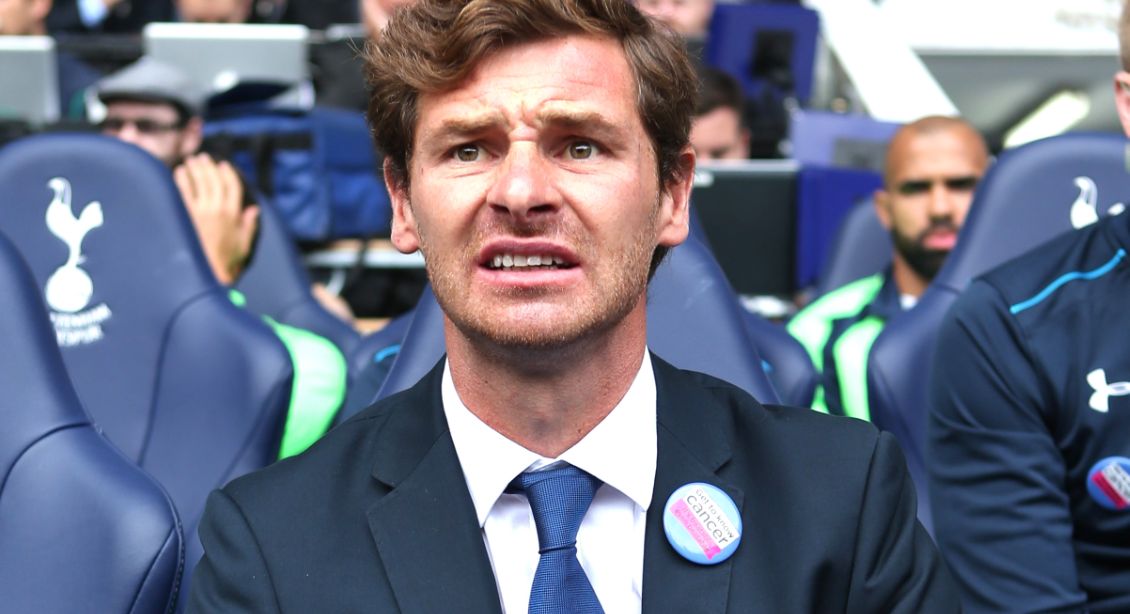
Passive probing and no punch: Who’s to blame for Spurs’ spanking?
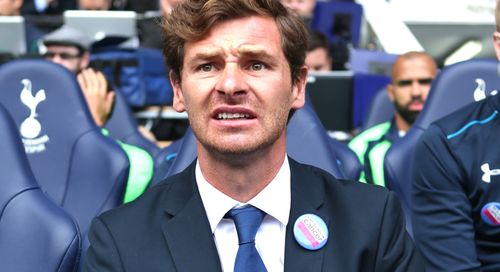
Andre-Villas-Boas
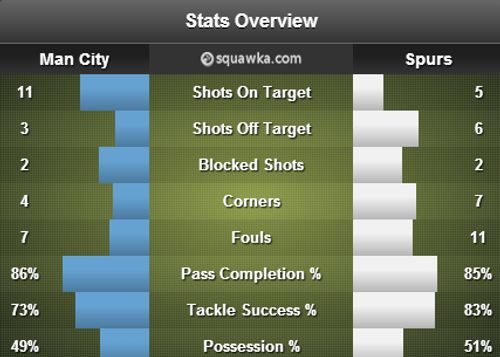
Overview
As if seeing Arsenal top wasn’t bad enough, Tottenham fans were subjected to an added humiliation yesterday, losing 6-0 at Manchester City in their worst league defeat since 1996. As the dust settles on a shell-shocked set of supporters, we look at where it all went so horribly wrong for the White Hart Lane outfit – expanding slightly on the thoughts of notorious Arsenal fan Piers Morgan.
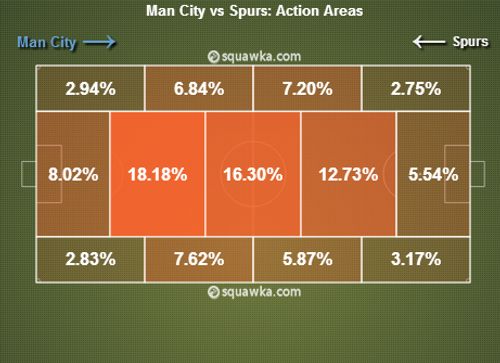
At first glance the stats look fairly even – certainly more even than those that you would expect from a 6-0 thrashing. City had three more shots – and managed to direct more of theirs towards the goal – but Tottenham edged possession and had more corners than their hosts.
The games action areas also defy the scoreline, with the most populous area of the pitch being the area just outside the Manchester City box. So with more of the ball and more of the territory how did Spurs conspire to lose 6-0?
Defending
Hardly a surprising inclusion on the list of what went wrong – defending. They didn’t bother with it. The early goal knocked the stuffing out of what had been one of the league’s tightest defensive prior to kick off, and the Tottenham defence didn’t settle all game. Lloris’s kicking was poor, and individual mistakes were ruthlessly punished by one of the division’s top strikeforces. None of the backline came out of the game with any credit as they all chose the same day to have an off-day.
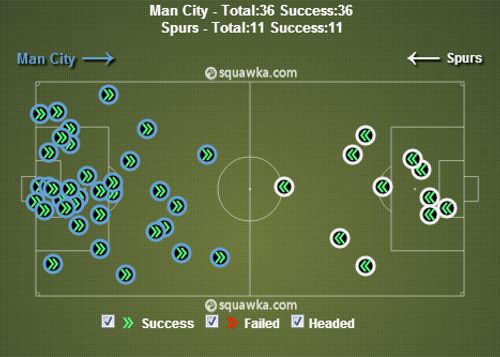
Clearances
They were frequently left chasing shadows, as demonstrated by the clearance diagram above. Making less than a third of the number of clearances that City managed, Tottenham’s defence struggled to get near to a side that shifted the ball quickly and with purpose.
Soldado v Aguero
It’s safe to say that the pre-season optimism brought about by Spur’s summer transfer dealings has vanished, with the disappointment of Roberto Soldado a £26m part of that.
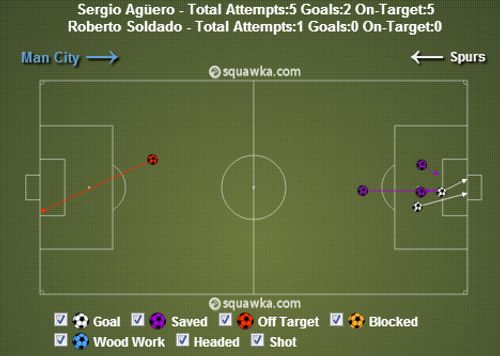
The Spaniard produced an anonymous display, that was made to look even worse by the livewire attacking duo of Sergio Aguero and Alvaro Negredo at the other end. Soldado managed just one shot on goal over the 90 minutes, and even this was an off target effort from range. Aguero, on the other hand, took five shots, hitting the target with all five and scoring two of them.
It is clearly unfair to judge a striker based soley on shots taken in a 6-0 defeat, but when taken in the context of the Spaniard’s season as a whole it isn’t an unfair snapshot of his struggles. He looked every inch a player devoid of confidence at the Etihad Stadium, and his performances have been a far cry from those at Valencia last season.
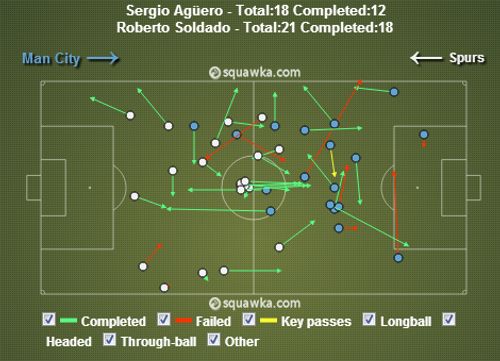
Soldado v Aguero Passes
Soldado did manage to make a higher percentage of his passes (86%) than both Aguero (67%) and Negredo (71%). However this doesn’t tell the whole story. The graphic above shows the completed passes of both Soldado and Aguero. What is notable on the graphic is that most of the arrows are pointing the same way: towards the Spurs goal. Whilst Soldado can justifiably apportion some blame onto his teammates, his passes were generally going backwards.
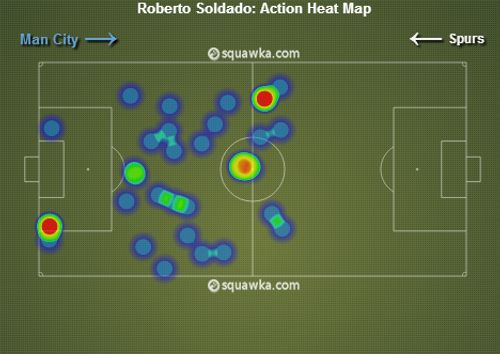
Soldado Heat Map
Picking the safe ball, rather than a riskier forward pass, smacks of a player lacking in confidence and Soldado remained on the periphery of the game throughout. Alongside his failure to get into shooting passes or contribute much in the side’s build up play Soldado failed to complete a take-on, and his frustrations can be summed up by the fact that one of the deeper colours on his heat map is from repeatedly taking kick offs.
Attacking at Pace
However whilst Soldado-bashing is easy and often tempting, it doesn’t tell the whole story. Whilst City had less of the ball than Spurs, they did far more with it as they attacked with a pace and purpose that has been lacking for Andre Villas-Boas’ side since the departure of Gareth Bale.
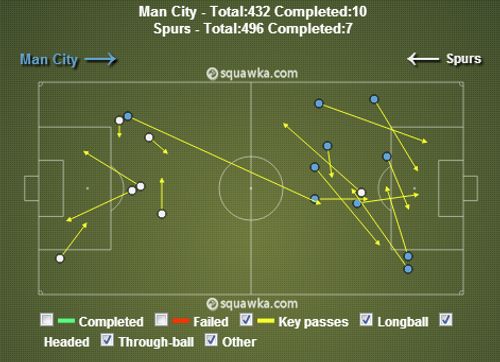
Key Passes Made
The graphic above shows the two sides respective key passes, with City three ahead of Spurs. On the surface this also appears to confound the score-line, with City only creating three more chances than Spurs. However, what is noticeable is the length of the key passes.
Whilst Spurs had more possession and made more passes, City looked to get the ball into their front two as quickly as possible, and as such frequently had the Spurs defence back peddling towards their own goal as City forwards ran at them. City’s key passes reflect this speed and dynamism, as they are on the whole a bit longer than the Spurs key passes. Manchester City’s key passes were direct and with purpose, but Spurs’ key passes include a number of short backwards or sideways lay-offs.
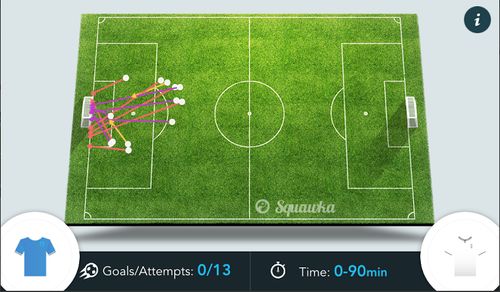
Spurs slow build up play led to a number of their efforts being mere pot-shots from range. Whilst they had 13 shots, only a small proportion of these could actually be labelled as clear cut chances. Many were hopeful hits from range, as Spurs slow build up play frequently let the home side’s back four regroup, settle and prevent chances from occurring. City may only have had three more shots, but they were from better chances and positions, explaining why they hit the target with more of their shots than Spurs did.
This also helps to explain the 36 clearances that Manchester City made to Tottenham’s 11, which cannot be soley put down to poor defending. By having their opponents on the run City minimised the possibility of clearances being made, whilst the time that they were given to regroup by Tottenham accounted for the high number that their own defence made.